There are many unsolved mysteries on earth. Even if we’ve spent our whole lives studying that fish are a type of animal that swim with their fins and tails, you must have imagined a fish having legs at some point. Haven’t you?
Although it might look like a fantasy, this is actually a real concept. Yes, you read it correctly; many fish actually have limbs that allow them to move around. Strange reality!
It is pretty hard to imagine fish having legs since it would make swimming difficult for them. But, there is proof that many aquatic species can walk. Fish with leg-like appendages have adapted to walk on the ground, including mudfish, handfish, and Garnai.
Why Do Fish Have Legs?
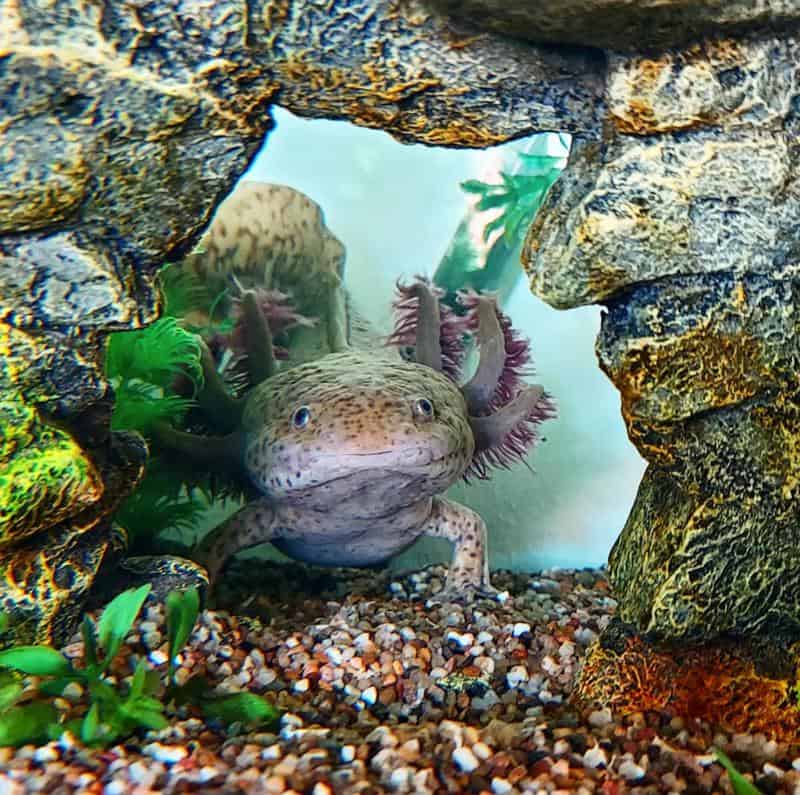
The concept of fish having legs exists. Some species have developed strange ways of coping with the obstacles of survival in nature.
These organisms have evolved the power to stroll on the ground as well as swim in the water. There is proof that this atypical growth could be explained by these factors:
- Gathering food: Species that could travel outside of the sea in looking for nutrition or stick to the depths of the water bodies or rivers against the flow of the tide will be more successful in obtaining food. That’s why having limbs could be helpful.
- Running away from danger: Animals with the ability to switch between the two protected areas anytime (from ground to freshwater or vice versa) have a higher chance of surviving an attack. When a shark threatens it, any species having legs may simply jump onto the land. One may dive into the sea if they are endangered by a land creature.
- Fitting in: Fish having legs have the ability to hold on to objects in their surroundings, giving them a solid defense from any potential attackers.
12 Fish with Legs
1. Frogfish
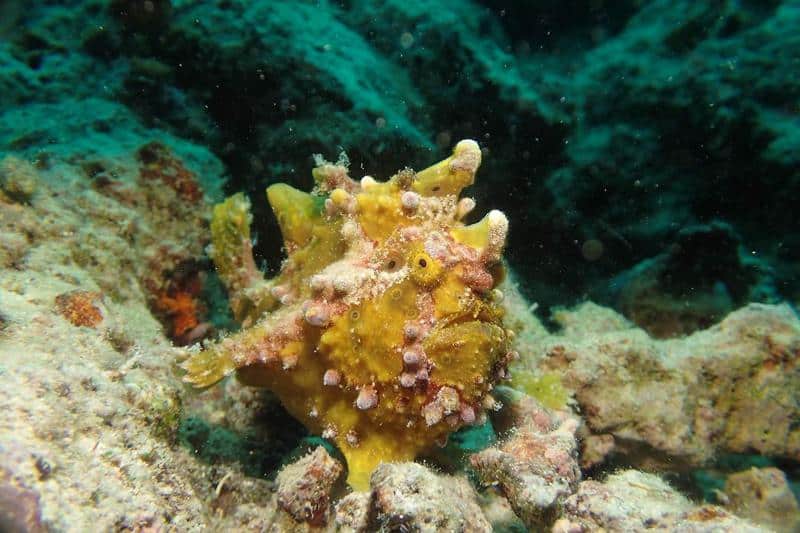
The Frogfish would be the only limbless species you will probably come across. The Frogfish is a member of the Anglerfish group.
These species, to describe them in simple terms, have dorsal fins that double as limbs. In comparison to other species, the dorsal fin has developed to be bigger and highly versatile, giving them the illusion of limbs.
It is common to find this species in aquatic habitats in continental and tropical regions. Frogfish are little species with a lot of strength. The little fish sit there looking for potential prey. They are well hidden due to the strange limbs that surround their body.
When prey approaches, this little creature, with the help of its legs, either drags the prey towards itself or stays still for a long time until the prey gets close.
If you’re wondering where this kind of species can be located, it can usually be discovered on beaches on cliffs in the ocean. They are sometimes caught for reef-keeping operations, in contrast, to stay in their native marine environment.
Researchers are always discovering new types of such strange species. Reportedly, the limbs of a blackfish belonging to the same frogfish group were discovered and brought to labs to test them.
2. Batfish
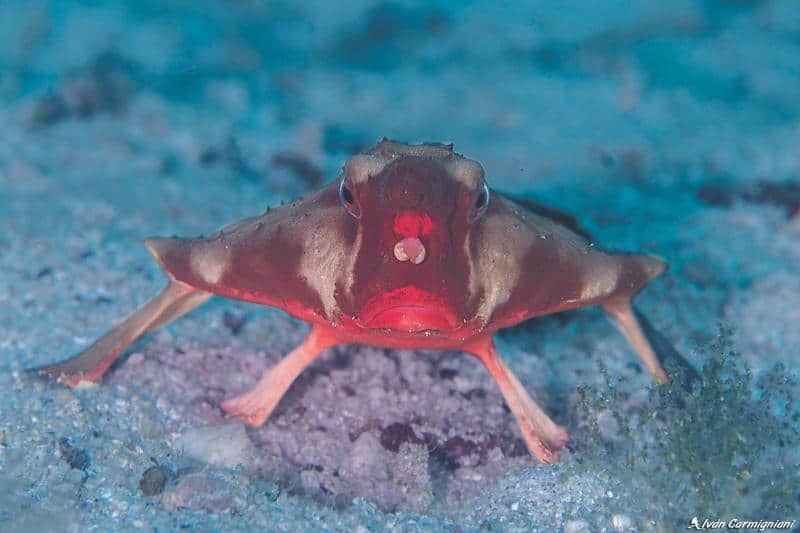
Bat fishes resemble a lot with frogfish due to the fact they both have extended dorsal fins that function as limbs. Both of these species are active members of the anglerfish family. Batfish can travel more easily on the sea bed due to their fins. Despite having several similarities, batfish are quite different from frogfish.
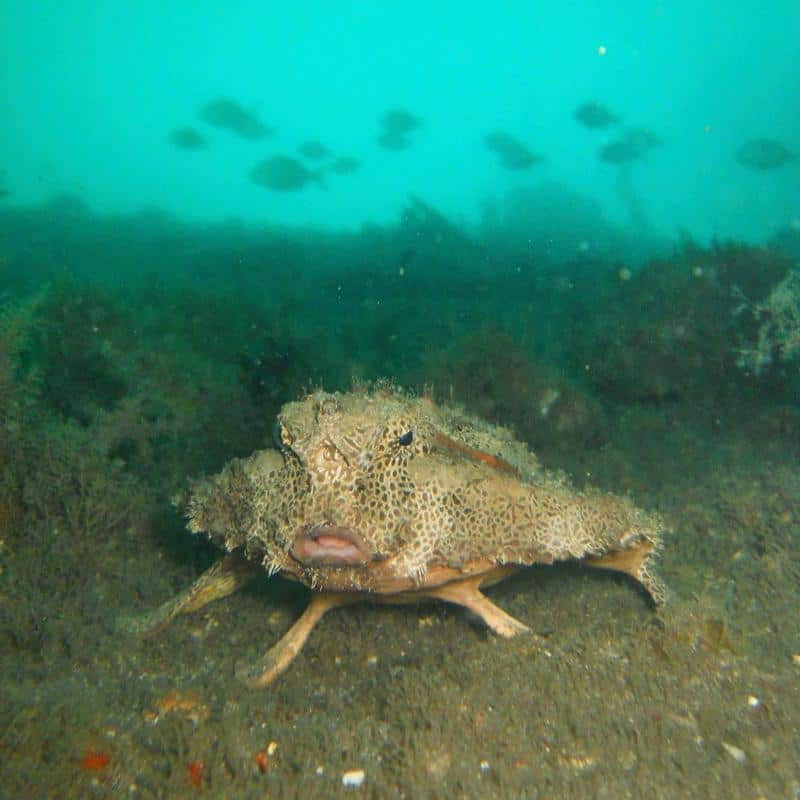
There are around 60 different types of batfish. They aren’t physically adapted for swimming. However, they use their fins to travel around the bottom. With their flathead, skinny physique, and strolling motions, researchers have noticed that they are known to be among the strangest appearances of any animal found in the ocean.
Researchers have categorized the dorsal fins as having leg-like characteristics for a reason. Most species of batfish are found in deep ocean areas.
3. Handfish
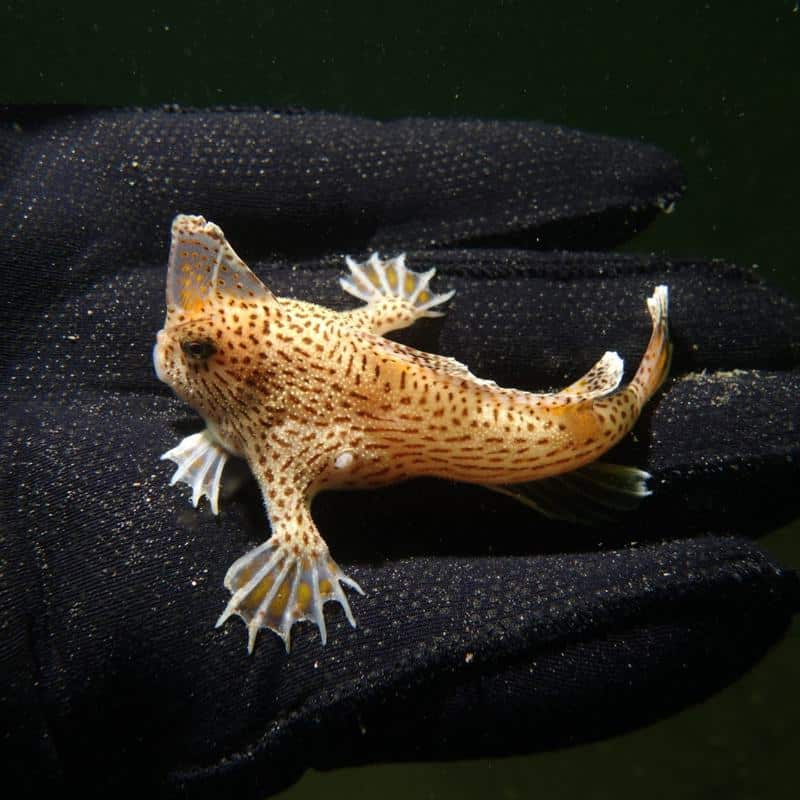
The handfish is related to batfish and frogfish because of its flippers that resemble limbs and may be utilized to travel over the seabed. It is within the same group as anglerfish.
This fascinating animal is called a handfish for a reason. These species have fins that resemble hands. In case you were curious, they hardly ever touch down on the ground; instead, they seem to be gliding along the seabed.
They can’t swim very well and would rather wander on the ocean bottom than swim freely.
They are most often seen in Australia, Georgia, and Tassie. These creatures are intriguing since scientists don’t know about them in detail.
4. Mudskipper
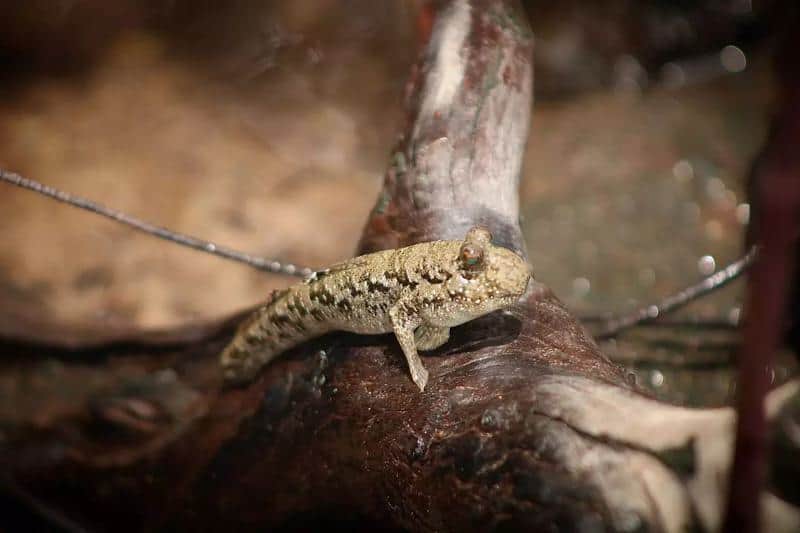
The mudskipper has dorsal fins, and it is the most accurate picture to explain a fish with limbs as well as a tail. The fish literally travels around on the ground. Mudskippers come in approximately 30 distinct varieties, and every one of them relies on walking.
Fish are evolving to become either land-based or aquatic creatures. You’ll notice that they differ from traditional marine species in being capable of staying alive for extended periods of time when roaming on the ground.
The story doesn’t end there. The dorsal fins of the walking fish are used for ground travel. The species’ unique tail sets it apart from other species, making it possible to navigate the muddy areas on the ground. They often live in muddy parts of the ground near the coast. But walking is something they can do extremely well.
In fact, the mudskippers could hop over the ground at tremendous speeds. They’ve even been seen to climb onto woods and lower twigs.
They have also been reported jumping as far as 2 feet above the ground. Due to both its unique physical features and intriguing behavioral traits, the mudskipper has long been a matter of research to biologists.
On the ground, they have huge burrows that allow them to vanish under the sand without leaving a trace. They are quite proactive on the surface as well, defending their territory with their pointed heads and fighting fellow Mudskippers.
5. Lungfish
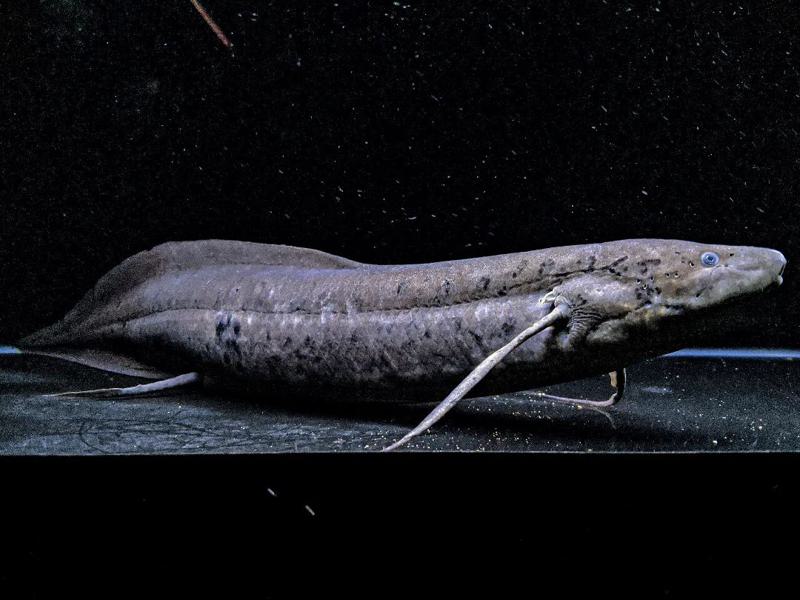
As implied by its title, the lungfish can survive on the ground since it can breathe oxygen. However, it is not able to travel on the ground.
These remarkable species have unique gills and lungs that help them to inhale oxygen and survive underground due to evolution. The unique fins on species’ bodies give them the appearance of moving along sea beds.
In case you were curious where these peculiar fish came from, they have existed for a long time. However, the archaeological evidence suggests that they date to the Jurassic era. These species’ lungs and capacity for walking on the ocean’s surface provide scientists with inspiration.
Despite the fact that they do not stay on the ground, their lung ability allows them to travel to the bottom of seabeds and thrive in extreme environments.
6. Axolotl

The axolotl isn’t really a fish, in spite of what some people may believe. Its extremely noticeable gills make it simple to mistake for a creature having limbs and a dorsal fin.
It’s frequently referred to simply as the Mexican walking angler fish. In fact, this unusual tiny critter is a neotenic amphibian.
If you’re wondering what it refers to, it’s a salamander that undergoes transformation but retains its lungs and remains in the sea.
It’s a type of amphibious creature that has long been related to fish. Despite being a marine animal that may be discovered in a warm ocean, axolotls are typically kept as pets in aquariums.
Related: Baby Axolotl Care: Tank Set-Up, Feed & Health Issues
7. The Red Gurnard
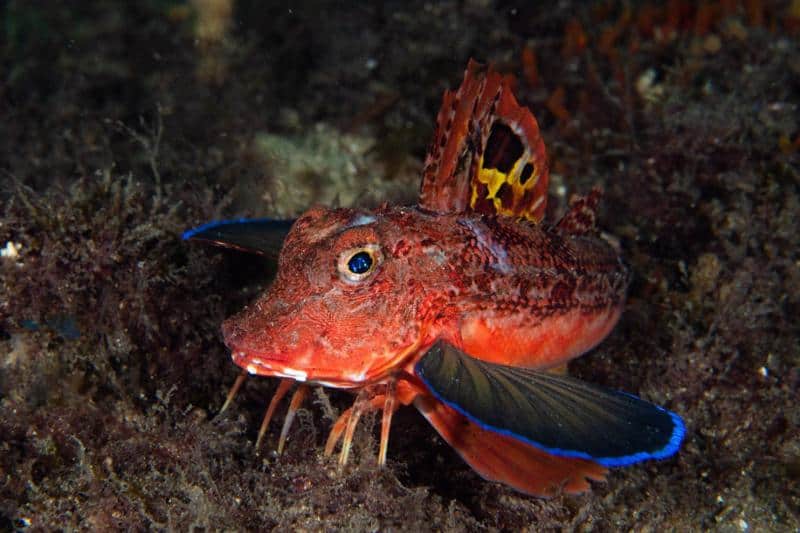
The red gurnard belongs to a triglidae friend or relative with a lengthy body and a big jaw. The fish with a peculiar appearance possesses far more unique qualities compared to any other species.
Some quills have been adapted to resemble and act like limbs, beginning with the dorsal fins. The species utilizes its dorsal fins, which imitate angel wings for its protection and mating.
The red gurnard’s dorsal fins assist it in moving through the seabed, but it also has a special mutation that lets it navigate by feeling its surroundings and smelling food nearby: it has sensory receptors.
8. Epaulette Shark

Epaulet sharks are tall and thin species with a distinctive eye-like feature over the dorsal fin. There are numerous evenly placed black dots all over the fish’s body.
In research conducted by Florida Atlantic University and Australian colleagues, it was discovered that the Epaulette fish had the necessary capabilities to enter and leave the ocean at any time. It has no legs but manages to travel by wriggling its abdomen with the aid of limb-shaped wings. It is most likely the weirdest and most uncomfortable walking technique of fish.
According to the scientists, since little fish relocated to a different territory, those sharks taught them how to stroll.
9. Walking Catfish
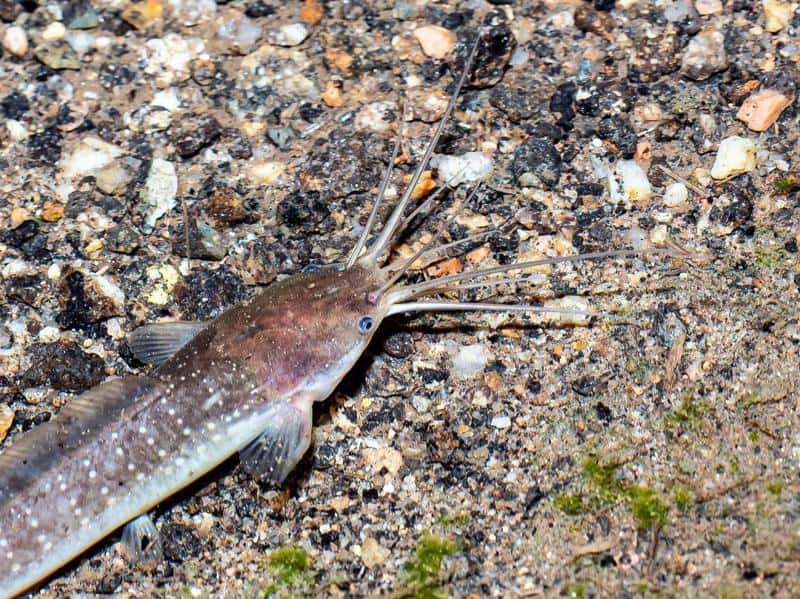
Asia’s watery ecosystems are home mostly to walking catfish. Because it wears optical barbells, this species is similar to most catfish. But what makes it unique is that it can also explore life on land.
Both the snakehead and the wandering catfish are weird. Because it lacks fins that resemble hands or limbs, it must move over the ground by wriggling its core muscles.
The catfish’s dorsal fin, on the other hand, assists it to keep straight and gives it a lift, which is not the same for the snakehead. These fish are able to inhale oxygen with the help of their unique respiratory system.
10. Coelacanth
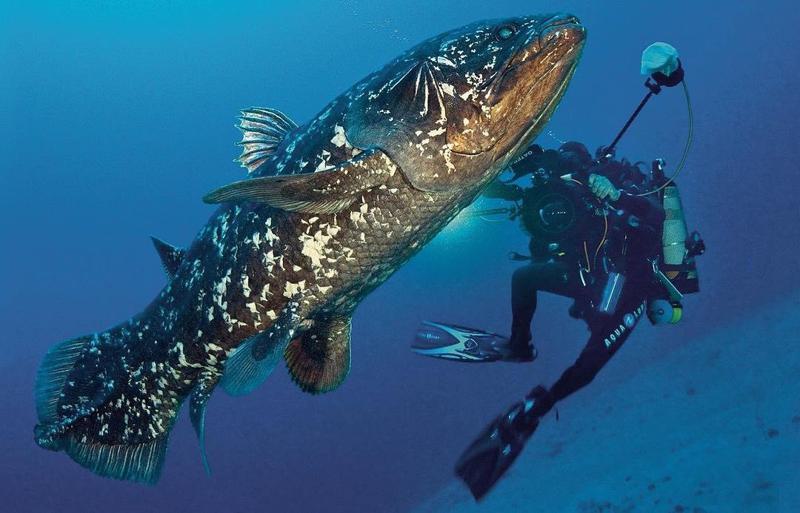
The coelacanth is a large, mysterious, deep-sea creature with a lifespan of approximately 100 years. The prehistoric species is distinguished by a set of thick lateral fins that stretch out from the abdomen-like limbs.
According to Nat Geo specialists, the species uses these coelacanth pseudo legs to walk back and forth in the water resembling a running calf as they travel deep down into the sea. The walking technique is similar to the vertebrate animals.
Surprisingly, researchers thought Coelacanths were endangered until 1938 when they found several healthy animals in South Africa.
11. Cave Angelfish
The Cave Angelfish is a small blind species that grows to approximately 1.5 inches in size. The unique angelfish despite its small stature is remarkable not just for its nearly undetectable pupils but also for the way it walks, which is similar to that of several land animals, notably the amphibian.
According to research conducted by a group of international researchers, the cave-blind species has developed a strong pelvic spine that allows the small animal to move and crawl while twirling its body from one side to another.
12. Snakehead
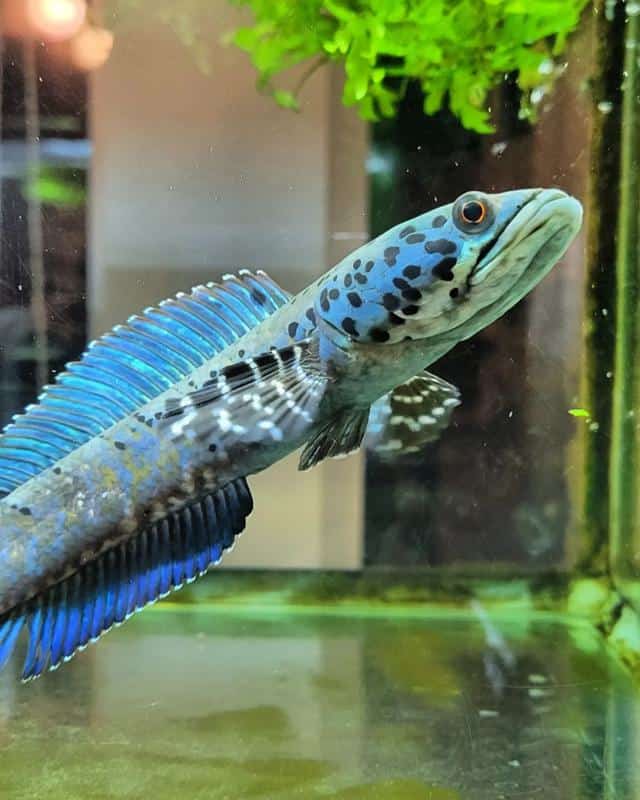
Snakeheads are migratory species known for their large caudal fin. Snakeheads were amongst the strangest reptiles that may exist on earth. However, only young reptiles exhibit this remarkable walking skill.
Interestingly, they employ their whole spines instead of their tails. They stroll while wriggling their elongated, thin bodies as they go through one lake to the next.
They have the ability to inhale oxygen, which helps them sustain themselves on land as well.
FAQs
What Is the Name of The First Aquatic Species to Ever Walk on The Land?
Tiktaalik became the first freshwater species to walk freely on the ground. They colonized the earth around 375 million years ago.
Which Fish Can Fly, Walk, and Swim?
The power to effectively swim, move, and fly is only inherited by one species. That fish is called Garnai. They are capable of flying, walking on the ground, and swimming in the ocean all at once.
Which Freshwater Fish Has Legs?
The axolotl is the common name for the Mexican fish that have legs.
Conclusion
It’s incredible to watch fish having limbs that allow them to walk on the seabed as well as the ground. However, several other species have also adapted to survive. The same is true for fish.
These species raised the bar when they wander both on land and under the ocean. They have the ability to run away from deadly predators and catch their prey.
Some of them even exhibit traits associated with land-based creatures, such as territorial aggression and reproduction, when living on land.
Some animals, however, have evolved specialized lungs that allow them to breathe both onshore and at the water. What’s even interesting is that this growth has been going on ever since ancient times!